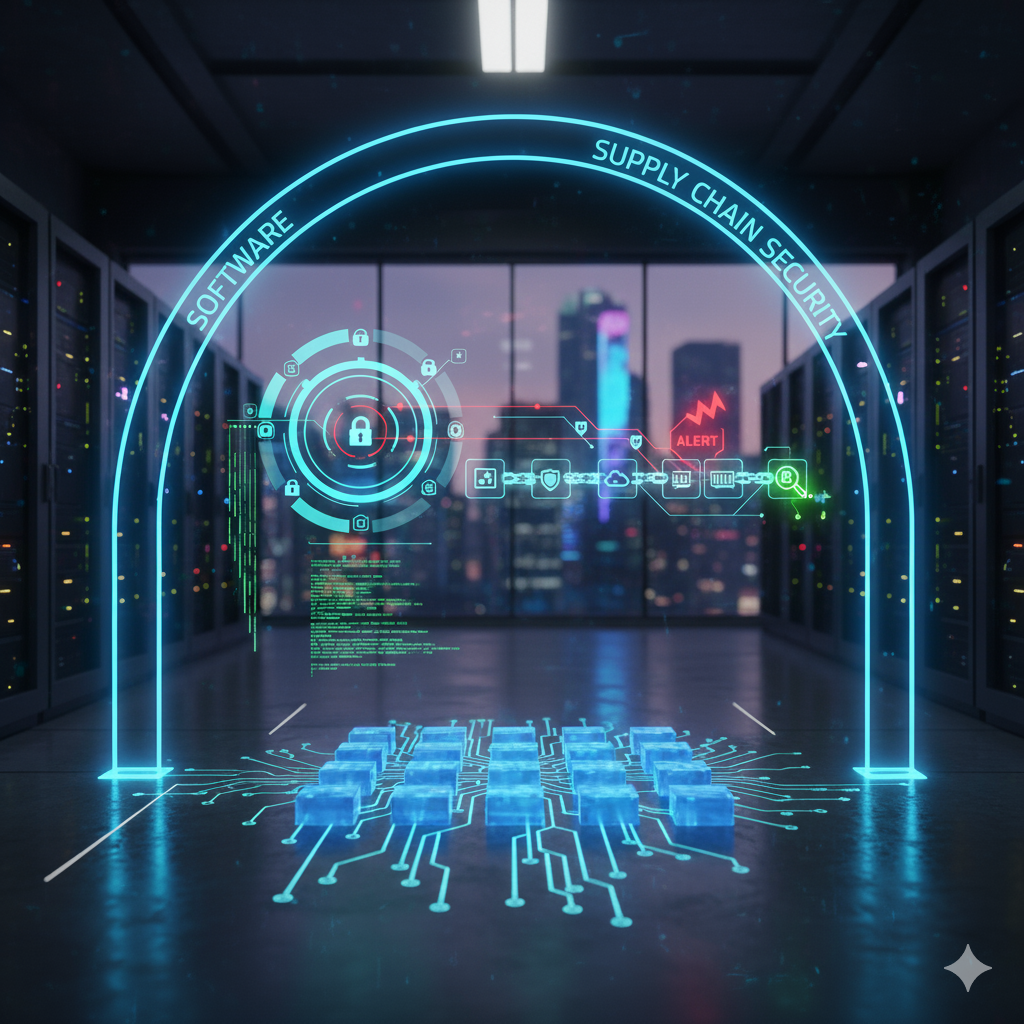🌍 Introduction: The Significance of Software Security
In today’s world, software forms the backbone of every business. From smartphone applications to financial systems, software powers our daily lives. However, hackers have evolved their tactics. They no longer limit their attacks to applications alone but now target the software supply chain — the array of tools, libraries, and services used in app development.
To counter this threat, companies have begun to implement DevSecOps – a contemporary approach to software creation that integrates security at every stage.
🔹 DevSecOps Explained (In Simple Terms)
DevSecOps stands for Development + Security + Operations. It refers to:
- Developers check for security throughout the process.
- Security plays a key role in coding, testing, and deployment from day one.
- Automated tools catch issues on.
👉 Picture this: It’s like building a house. You don’t wait until the house is done to check safety. You ensure safety at each step — as you lay bricks and wire lights.
🔹 What is Software Supply Chain Security?
A software supply chain includes all parts that go into making an app such as:
- The source code developers create
- Open-source libraries and frameworks
- APIs and third-party tools
- Cloud services and servers
If hackers break into any of these parts, they put the entire software at risk. The SolarWinds attack stands out as a well-known case where bad actors snuck harmful code into a -used software update.
👉 Supply chain security ensures protection for every step of the process.
🔹 How DevSecOps and Supply Chain Security Complement Each Other
DevSecOps and supply chain security share a common goal: to prevent attacks before they cause harm. Working together, they:
- Catch Problems Early – Security checks take place while coding, not afterwards.
- Protect Dependencies – We examine open-source and third-party tools to find potential risks.
- Monitor Continuously – We keep an eye on apps even after their release.
- Stay Compliant – This meets industry regulations such as GDPR or HIPAA.
🔹 How Companies Can Put This Into Action
- Use SBOMs (Software Bill of Materials) → A breakdown of all parts within your software.
- Automated Testing → Programs that check for errors and weaknesses.
- Secure CI/CD Pipelines → Protect build and deployment systems.
- Zero-Trust Security → Check every system; never assume safety.
- **Update ** → Fix and upgrade tools, libraries, and servers.
🔹 Benefits of Strong Security
- Reduced risk of hacks.
- Boosts customer trust (secure apps gain people’s confidence).
- Quicker releases without last-minute corrections.
- Simpler to follow global compliance rules.
🌟 To wrap up: Security shapes the future of software
Online dangers are on the rise, and companies can’t turn a blind eye to them. When businesses mix DevSecOps with supply chain security, they can build safer more dependable, and trusted software. Organizations that make security their top priority will lead the way in the future.
